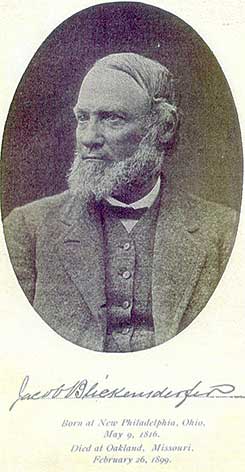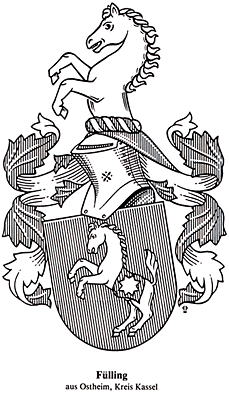Santa Fe artist Ford Ruthling was a ‘master of multiple mediums’ (December 1, 2015)
Santa Fe artist and folk art collector Ford Ruthling, whose imaginative, versatile works are in the Smithsonian Institution in Washington, D.C., the Dallas Museum of Fine Art, and the New Mexico Museum of Art, as well as many private collections, died Monday in Albuquerque after a long illness. He was 82.
Family members said he had suffered from diabetes and age-related illness.
In addition to oil on canvas, Ruthling worked in watercolor, tin, wood, clay, iron and paper, and often was inspired by the natural world. His oil paintings of Pueblo Indian pottery were featured on a series of postage stamps issued in 1977.
“Some artists do one thing only,” he said in a 2001 interview, “but I like to explore all the possibilities.”
His home in the South Capitol neighborhood was filled with Mexican antiques, Catholic reliquaries, photographs, pottery and ceramics. The house, which he sometimes opened to visitors for fundraising benefits, is surrounded by a large garden with a profusion of flowers and secluded walkways.
He also kept the home filled with animals, including dogs, cats and, at one time, a crow named José Cuervo, who ate out of Ruthling’s mouth.
“He was a wonderful, flamboyant, friendly, talented guy who filled a room,” said gallery owner Nat Owings, who had known Ruthling for most of his life. “Big loss. Great guy.”
Another Santa Fe gallery owner, Nedra Matteucci, said Ruthling “was definitely a vibrant character who filled his life with colorful details and people, his garden, his folk art collection, his art. He was just an original in every sense and ignored convention.”
His sister Theo Raven, former owner of the Doodlet’s gift shop in downtown Santa Fe, said, “People just fell for him. He was very charming and witty.” And he did exactly what he wanted, she said, including walking around the house naked.
Ruthling and his late twin brother, Carleton, were born at the old St. Vincent Hospital and grew up with their older sister, Theo, during the Depression in Tesuque, where they had a somewhat unconventional, often idyllic childhood.
Their mother, Helene Maurer Ruthling, a German immigrant who came to New Mexico as governess to the grandchildren of heiress and arts patron Mabel Dodge Luhan, bought land in Tesuque in 1928 where the family grew fruits and vegetables and raised chickens, geese, cows, goats and even peacocks. No television was allowed, and the children sometimes slept outside, even in the winter.
After her divorce from the children’s father, Paul, Helene started Rancho Arroyo, a school Ruthling once described as a yearlong summer camp. The boarders came from both rich and poor families and included a son of her friend, Pamela L. Travers, author of Mary Poppins. Helene’s parents moved to New Mexico to help with the children.
“We were like farmers,” Raven said. “We worked like hell from the time we could.” They picked apples, pressed cider and helped manage the camp.
Their mother had many friends from Santa Fe’s artist community such as Will Shuster, John Sloan, Josef Bakos and William Penhallow Henderson, who were often around the ranch.
Ruthling graduated from Santa Fe High School in 1952 and studied art at The University of New Mexico under Randall Davey for about 18 months. Then he enlisted in the Air Force. While in the service, he made paintings and drawings of flora and fauna, and sent them to Raven, who found them good enough to sell through her shop. That was the beginning of his long and successful artistic career, she said.
After the military, he became curator of exhibitions at the Museum of International Folk Art and worked under Alexander Girard for several years before becoming a full-time artist.
In the 1990s, he developed a series of works called “embossed paintings,” a unique kind of monotype created from tin matrices with names like Cows Have an Inner Life (with a cow on a pedestal) and The Fifth Day of Creation.
Ruthling has received a lot of recognition for his work. In 1993, he was named a Santa Fe Living Treasure. In 1997, he created the official lithograph titled Harvest for the Santa Fe Wine & Chile Fiesta. St. John’s College presented a four-decadeslong retrospective of his work in 2001, and he was honored with the Governor’s Award for Painting, Sculpture and Printmaking in 2005.
Ruthling’s half-sister, Anita Ruthling Klaussen, said she set her Thanksgiving table this year with plates designed by him. “He had more creative talent in his little finger than most people have in their whole bodies,” she wrote. “He was a force: creative, interesting, raconteur, adventuresome, fine gardener, and a cook.”
In an article in The New Mexican about the award, he said, “If I can create something for myself — and it’s liked by the public and sells — great. An artist’s first responsibility is to themselves, but hopefully in expressing themselves they will connect to other minds.”
Owings, who also comes from one of Santa Fe’s old families, said both his mother and his stepmother owned works by Ruthling. He is especially fond of an etching of a bunny that hung in the bathroom of a family home at Big Sur, Calif.
In 2011, Owings presented another retrospective of Ruthling’s work. “What Ford was, was a really multitalented artist in terms of a variety of mediums. He had an extraordinary eye for New Mexico and Spanish and Pueblo culture, and how to translate that into his art. Whether painting crucifixes or pots or animals, he was master of multiple mediums. Pottery and works on paper and oils, it was his flamboyance and tireless ability to come up with new ideas and wonderful ways of handling subjects,” Owings said.
At the 2011 opening, Owings recalled, Ruthling was “still asking beautiful women to sit on his lap. It was nothing salacious. A lot of women really loved him. And you wanted to sit on his lap.”
Until his death, Raven said, people would call and make appointments to buy work from his house.
According to Matteucci, “His colorful presence in Santa Fe continues on in his unique art.”
Besides Raven and Ruthling Klaussen, Ford Ruthling is survived by his longtime partner Robert Mason, as well as two other half-sisters, Carmen and Marcela.
Source: Anne Constable, The Santa Fe New Mexican
Ruthling-related files and materials
- This is your life, Helena Ruthling
- Santa Fe living treasure: Helene Ruthling
- Santa Fe living treasure: Ford Ruthling
- Carleton ‘Carl’ Ruthling — Computer Scientist
- Santa Fe living treasure: Theo Raven
- As Real As Any Fantasy: The Art of Ford Ruthling
- A Prayer for all Creatures / Espanola Valley Humane Society, with Theo Raven
- Santa Fe artist Ford Ruthling was a master of multiple mediums
- A look back at some of the notable people who died in 2015
- Shop owner brought whimsy to downtown Santa Fe

